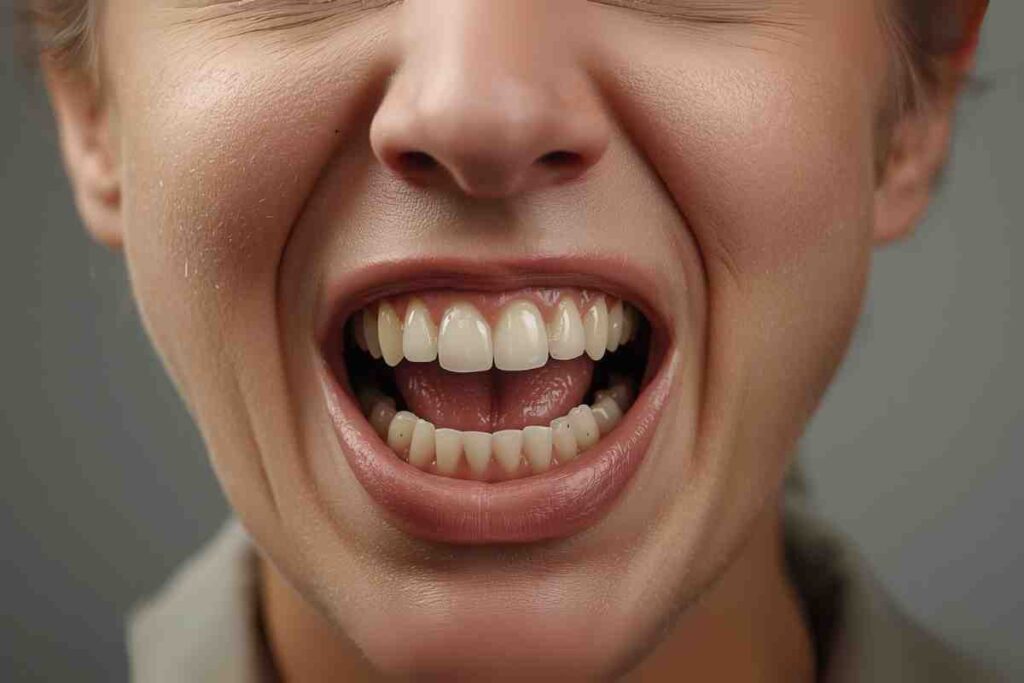Language is full of hidden gems words that carry vivid images but are rarely used in daily life. One such word is dentiloquent, a fascinating term that literally means “speaking through the teeth.” Though uncommon, this word captures a striking blend of physical posture and emotional expression, with roots in Latin and applications that bring precision and power to modern communication.
What Does Dentiloquent Mean?
In simple terms, dentiloquent means speaking through clenched or gritted teeth. It often conveys restraint, tension, or suppressed emotion. Imagine someone delivering words slowly, each syllable pressed through their teeth. it suggests more than speech; it suggests intensity, anger, or contained frustration.
This makes the word especially valuable for descriptive writing, where one term can communicate both body language and emotional tone.
Etymology and Origins
The word dentiloquent is built from Latin roots:
- Denti → from dens, meaning “tooth.”
- Loquent → from loqui, meaning “to speak.”
Combined, these parts literally form “to speak with teeth.” Linguists classify it as one of several rare “-loquents,” alongside words like melliloquent (speaking sweetly) and grandiloquent (speaking pompously).
This construction shows how English borrows heavily from Latin, creating highly descriptive terms that compress entire gestures or tones into a single word.
Pronunciation Guide
Many readers stumble on rare words because they are unsure how to say them aloud. Dentiloquent is pronounced:
den-TIL-oh-kwent
Understanding pronunciation makes the word easier to remember and use in conversations or literature.
Why Dentiloquent Matters in Modern Language
At first glance, dentiloquent might seem like an archaic curiosity, but it has unique advantages:
- Precision: Instead of writing “he spoke angrily through gritted teeth,” one word dentiloquent captures the entire image.
- Literary Flair: Writers and poets often seek rare words that add freshness to their work.
- Emotional Depth: It doesn’t just describe sound; it conveys posture, tone, and mood simultaneously.
When used carefully, It elevates description without sounding forced.
How Dentiloquent Differs from Similar Terms
Writers often confuse dentiloquent with related descriptors. Let’s compare:
- Harsh speech: Focuses on tone but lacks physical detail.
- Hissing or whispering: Relates to sound volume rather than emotional restraint.
- Snappy or clipped: Emphasizes brevity but not the imagery of clenched teeth.
- Controlled calm: Suggests emotion but omits the physical act of speaking through teeth.
Dentiloquent uniquely merges physical posture with emotional state, which is why it stands out among vocabulary choices.
Examples of Dentiloquent in Literature and Everyday Contexts
To better understand its use, here are some examples:
- “She delivered her lines dentiloquently, her jaw tight with suppressed fury.”
- “His dentiloquent reply revealed more bitterness than he intended.”
- “Through dentiloquent words, he admitted guilt without losing composure.”
Although rare, the word appears in vocabulary lists, etymology blogs, and niche literary discussions. Exam prep materials also sometimes use it as a one-word substitute for “speaking through teeth.”
Using Dentiloquent in Writing and Speech
To apply dentiloquent effectively, consider these contexts:
In Creative Writing
Use dentiloquent when describing dialogue charged with tension. For example, a villain might speak dentiloquently to show restrained anger without shouting.
In Public Speaking
Mentioning it as a “word of the day” can enrich speeches or educational presentations. Its rarity makes it memorable.
In Academic Contexts
Dentiloquent provides an excellent example of how Latin roots shape English vocabulary, useful in linguistics and etymology discussions.
Psychological and Cultural Implications
Speaking through teeth is more than a stylistic choice. it often reflects deep emotion. Psychologists suggest clenched teeth during speech can indicate suppressed anger, discomfort, or intense concentration.
Culturally, this posture appears in movies and literature to heighten dramatic effect. Think of a tense negotiation scene where characters talk through clenched teeth—the delivery communicates far more than the words themselves.
How Dentiloquent Expands Vocabulary
Learning rare words like dentiloquent isn’t about sounding pretentious. Instead, it:
- Sharpens descriptive power.
- Encourages precision in storytelling.
- Provides alternatives to overused terms like “angry” or “tense.”
- Builds linguistic awareness of how English borrows from Latin.
Writers, students, and language lovers can all benefit from adopting such expressive vocabulary.
Conclusion
The word dentiloquent may be rare, but its meaning is powerful. It condenses an entire emotional and physical gesture speech through clenched teeth into a single vivid term. Whether you are a writer, student, or language enthusiast, incorporating dentiloquent enriches your vocabulary and strengthens descriptive expression.





